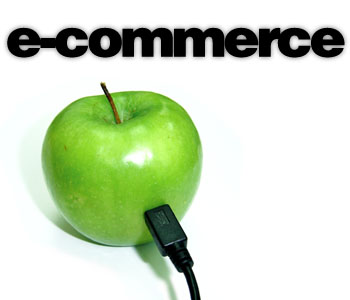
This guest post is contributed by Constantinos Tassigiannis.
Want to start your own business but don’t know how? Read on and get the knowledge to live the dream.
First, let’s look at the positives and negatives of starting your own business. The upside is that you are in charge of your own career and pay and if your business really takes off, you can end up with a massive salary which is much more than you can earn at the regular job. The downside is that many businesses fail in their first year and it’s not for people who prefer working to a nine till five schedule as most of the time, in order to succeed, you have to work round the clock. A seventy hour working week is not unusual.
The key to starting a successful business is recognising a gap in the market and taking advantage of it. Others however choose to come up with ways of improving an existing product. Whatever road you decide, research is essential as it can make or break you.
Do you have an idea that no one has thought of yet? How about an improved design that costs less to make than the original, or makes it work more efficient? How dedicated you are to your idea will reflect on the outcome. There are different approaches, such as a tried a tested business model, a specific business opportunity, taking control and changing your life or working part time, depending on what road you want to take.
Once you have come up with a product or service, you need to refine it. We do this by developing it by using research. Does it satisfy a need? Once you have done that, you need to brainstorm your idea with friends and colleagues. Everyone brings forth their own perspective on the idea and can inform if there is someone doing the same thing. Think about how you will run your business e.g. will it be sorely run online or will it have stores? What makes it unique and better than the competition? Make sure your product complies with any legislations and safety regulations.
Once you have come up with a product or service, you need to protect it. We do this by having a record of ownership over it, known as Intellectual Property, IP for short.
There are four types of IP and the type of product you have determines the type of IP you should use.
* Patents for inventions
New or improved products that are capable for industrial application.
* Trademarks
Used to protect brand and corporate identity of goods and services, allowing distinctions between different traders
* Designs
Protect product appearance such as lines, colours, contours, shape, and texture, materials of the product itself or its ornaments.
* Copyright
Literacy, music, films, audio, broadcasts, software and media can be protected under this category.
It should be noted that it often is not possible to protect IP and gain IP rights without being applied for and granted. Copyright IP’s however arise automatically without registration, as long as proof of creation exists.
Importantly, you need to create a business plan, because without one, you aren’t going to get anywhere as an entrepreneur. A high quality business plan can help attract the right type of funding to keep your capital high.
You need to have an executive summary, stating exactly what you’re business is and why it exists. Basically, it is an overview of what your business is all about and this is vital as investors will make a judgement based on this section alone. Its purpose is to draw attention and make the reader want to find out more, possibly making them want to invest in your idea. If it has caught their attention, it has done its job. Make sure you do not use hype as an experienced investor will see right through this.
Then, you need a short description of the business opportunity, detailing who you are, what service or goods you will provide and who is your target market. Detail when your business will start, or when it did if it already has. The industry and sector it is a part of and its key features should be written. Any relevant history should also be noted, such as past owners et cetera. You also have to detail your current legal structure and what your vision of the future will be. Define your products differences to competition and what benefits it brings forth. Also noting what development you have in mind and if you own any patents or IP’s.
Once you have finished that, it’s time to put your strategy to the test. Write down what marketing and sales ideas you have. How will you get people to buy your product and where will they be able to buy from? What are the markets key current issues and how big is it? It is also important to know your competition. Note how you will go about positioning your product in the market place. Also detail pricing policies and how you will go about promoting your business. Maybe you’ll use advertising, PR campaigns, direct marketing, email or e-sales. You need to conduct market research and see if you idea truly fills a gap in the market effectively.
An effective way of researching a need is to convey surveys of the public, whether they would use the product. Ask customers of competing products for what improvements they would like to see. Monitor the competitions activities as this keeps you in the know whether they start a new service or release a new product that may compete with yours to a greater extent. Another utility that you should put to use is using focus groups to test out your product, using feedback from them to evolve your business. It is very important that you cover everything you can and conduct as much market research as possible as mistakes made later on due to poor information can be costly. Hire a market research agent to help out and make sure you haven’t missed anything as the more information you have, the better you can satisfy your customers.
Now that you have your point of sale ideas down, you need to work out who makes up your marketing team. List your credentials and the people you plan to recruit to work with you. Give details of the number of people you have in your workforce in total and by departments. How much time each employ spends working and how much they earn should be given here and any other numbers that affect the total amount of profit brought in by the company. You should also note down a timescale, noting costs and any training that will be given.
Onto operations and time to note down the premises you’ll be operating from, production facilities, your management information systems and your networking and IT. Do you have a business property or do you rent it? What are your long term commitments to the property and what facilities does it provide or will there be investments put in this field? Noting down all of this as well as how you go about using the facilities effectively really show that you know what you’re doing and you won’t be wasting time, as time is money. Any established procedures for stock control, management accounts and quality control should be put in this category as well as any IT experience you have because as technology evolves, so will everything else and you can’t risk falling behind.
Make sure your business plan reflects your personal vision, keep it simple and realistic and your business plan should work well.
Once that’s out the way, research is next, especially financial. Make sure you have Unique Selling Proposition and a business model at hand, showing how the revenue will come in. Also note forecasts for profit and loss, sales and cash flow statements. To help your business survive its first year, you’re going to need to cover your financial needs. Many businesses don’t make a profit in the first year, making only enough to cover their outgoings. So it is important to have funding if you want to survive. Plan out a budget using a personal budget spreadsheet detailing your domestic financial needs for the year. Keep a record of your spending and try and cut back on unnecessary buys. Appling for funding can really help and make things easier. You can do this in a number of ways. Sources of help include local business links, start-up schemes and financial advisors and accountants.
The Prince’s Trust (eligible age 18-30), that can provide a low interest loan of up to £4,000 for a sole trader and up to £5,000 for a partnership. They also provide up to £250 on test marketing, as well as access to a wide range of products and services to help your business stay in business.
Business Link: a company that provides a service in business planning, borrowing shares and equity, grants and government support banking, financial and debt recovery. It also has a wide range of information for entrepreneurs.
Chamber Of Commerce: “The National Voice for Local Business” employs more than 5 million people and also the widest business community to help fund you and give you the skills and information to succeed.
But you can also do things yourself to help fund your ideas, such as releasing equity from an existing asset, such as trading in your car for a cheaper one. Sell things you do not use or really need, get a loan from family members and friends. Get an overdraft with your bank account
Besides help with funding, there is also the choice of incubation. There are a good amount of incubators to choose from In the UK. They are designed to nurture your company, help guide your business, supply you with workspace and also provide you with the right information and advice with a combination of business development processes and infrastructure. Research has shown an 87 % and upwards survival rate for incubated companies compared to only a 40 % survival rate for non-incubated.
Incubators include Digital Inc in Liverpool ICDC, who currently house 12 small businesses and brought in a profit of over two million pound in the 2004 – 2005 year and is the UK’s first business incubator to be focused on the digital industries. Its current funding ends after 2008 but its manager Mr Peter Leather is putting together a sustainability model is confident that Digital Inc will become a centre of excellence.
Another incubator that has just recently opened is the Liverpool Science Park, which is run by Peter Leather, ex-manger of Digital Inc. This is a new modern building with office space and lecture rooms that can be utilised by small and corporate businesses. As with every incubator, an affordable fee is paid for the space needed, which is worth it considering the knowledge they’ll be passing on to you, as well as support given by staff and help lines.
Once you have enough information, you need to decide how you will trade. Will your business be a Limited Company or a Sole Trader?
A Sole Trader is a business which legally has no separate existence from its owner. All debts of the business are debts of the owner. The advantage in being a Sole Trader is control and business administration, due to their only being one owner.
A Limited Company has liability limited by the law. Funds can be raised by selling shares of the business. The drawback is that you risk losing control if shareholders join and equal a greater amount of ownership than yourself.
One final bit of advice is to make sure you hire the right type of people. Often, businesses can be hurt due to lack or determination or commitment put in by others besides the owner. You need to explore the options available to you, such as freelancers, fixed term contract employees, temporary staff, consultants and contractors. Whoever you hire, make sure they work to a high caliber, with the right mix of skills. It’s not an easy process but one that will pay dividends.
Article contributed by Constantinos Tassigiannis, BA Hons MBCS.
Freelance iMedian, artistic entrepreneur and disabled weight lifter.
www.DinoT.co.uk




